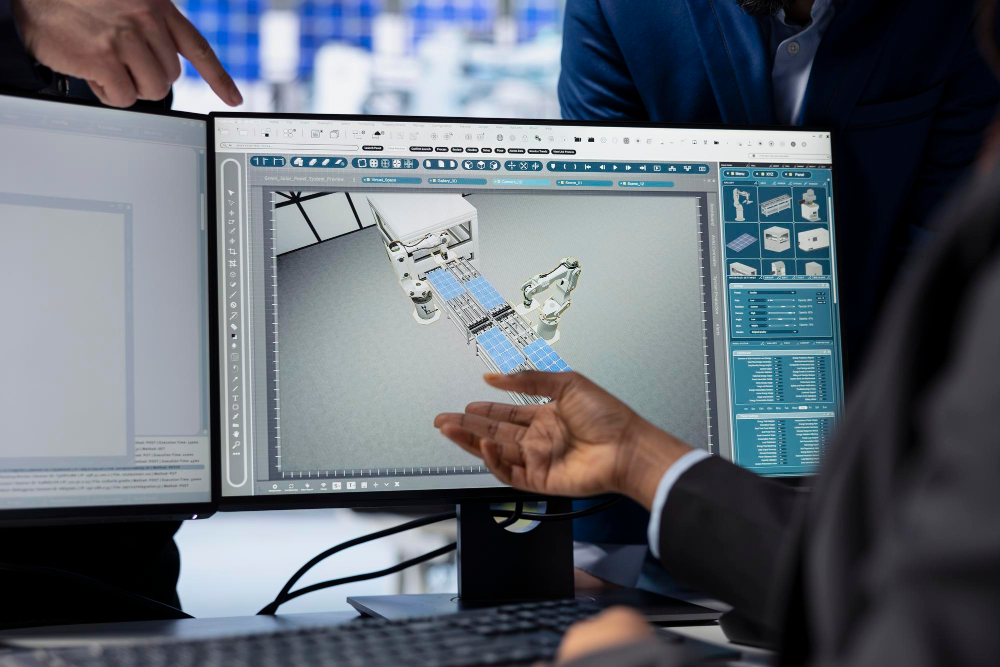AutoCAD Alchemy: Transforming Ideas into Digital Gold
In the world of modern design, where precision meets creativity, AutoCAD has long been the cornerstone of digital drafting. But beyond its standard perception lies a powerful transformation—one where mere lines and layers are transmuted into architectural brilliance, engineering marvels, and product prototypes.
AutoCAD is far more than a drawing tool—it’s a digital forge where ideas are transformed into precise, actionable designs. This transformation, akin to alchemy, is a magical blend of creativity, accuracy, and technology.
1. The Origins of the Alchemy: AutoCAD’s Legacy
AutoCAD, developed by Autodesk in 1982, was revolutionary from the start. It transformed the drafting table into a digital workspace, allowing architects, engineers, and designers to leave behind pencils and paper. The program’s name—short for Computer-Aided Design—hints at its mission: to assist the human mind in creating with greater precision and efficiency.
But what began as a simple 2D drafting tool has since evolved into a multi-dimensional powerhouse capable of handling 3D modeling, parametric design, dynamic blocks, and industry-specific toolsets. AutoCAD Alchemy refers to how this evolution has allowed creators to go from raw concept to digital gold.
2. The Philosopher’s Stone: The User Interface
Alchemy often speaks of a mythical Philosopher’s Stone, which turns base metals into gold. In AutoCAD, the Philosopher’s Stone is the user interface (UI)—the element that unlocks the software’s full power for the user.
The ribbon, command line, tool palettes, and workspaces together form the interface that bridges creative intent with technical execution. Mastering this UI is the first step in any digital alchemist’s journey. While intimidating to novices, the interface becomes second nature with practice, allowing seamless command execution, quick access to features, and an optimized workflow.
Key UI Components:
Ribbon Tabs: Group commands for quick access.
Command Line: The magic wand of AutoCAD; used for precision.
Model and Layout Tabs: Switch between working space and presentation.
Tool Palettes: Store commonly used tools, blocks, and components.
3. From Lead to Linework: Drafting Fundamentals
The foundation of AutoCAD Alchemy lies in mastering linework—the digital equivalent of sketching in gold. Every design, no matter how complex, starts with lines, arcs, and circles.
Essential Drawing Tools:
Line, Polyline, and Spline
Circle, Arc, Ellipse
Rectangle and Polygon
Using Object Snaps (OSNAP) and Grids, drafters ensure that each element aligns perfectly. The Ortho Mode and Polar Tracking assist in angular precision, while Layers provide control over visibility, organization, and aesthetics.
One of the most powerful features in AutoCAD act like transparent sheets stacked on top of each other, each containing different elements of a design (e.g., walls, electrical, furniture, annotations).
4. Layering Magic: Organizing Chaos
Layers in AutoCAD are like the alchemist’s jars—each containing different ingredients that contribute to the final potion. In the drafting world, they segregate elements like walls, windows, text, hatches, and dimensions.
By assigning colors, linetypes, and lineweights, layers enhance readability and ensure a clean drawing structure. The ability to lock, freeze, or isolate layers gives the user surgical precision while editing.
Layer Tips:
Always name layers clearly (e.g., Walls\_1stFloor, Electrical\_Lighting).
Use layer filters for complex projects.
Maintain a layer standard for team collaboration.
5. Annotation Enchantment: Communicating Design
A drawing without annotations is like a spell without an incantation. Text, dimensions, leaders, and tables convey critical information that turns a beautiful drawing into a buildable plan.
Key Annotation Tools:
Multiline Text (MTEXT)
Dimensions (DIM) and Styles
Leaders (QLEADER and MLEADER)
Tables and Field Automation
Proper scaling via Annotation Scaling ensures that notes appear correctly in both model and paper space. This dynamic linking elevates the design from a visual sketch to a working document.
6. The 3D Crucible: Modeling with Depth
The true magic of AutoCAD Alchemy emerges when transitioning from 2D to 3D. With AutoCAD’s robust 3D modeling tools, users can extrude, revolve, sweep, and loft shapes into complex models.
Core 3D Tools:
EXTRUDE: Turns 2D shapes into 3D objects.
REVOLVE: Spins a shape around an axis.
SWEEP & LOFT: Create custom geometries along paths.
PRESSPULL & SUBTRACT: Shape refinement tools.
Visualizing a design in three dimensions not only aids comprehension but also helps detect clashes, test feasibility, and generate presentation-quality renders.
7. Dynamic Elements: Blocks and Parametrics
Why redraw the same component a hundred times when AutoCAD lets you reuse it with flair? Blocks are pre-drawn objects—doors, desks, symbols—insertable anywhere in a drawing.
But Dynamic Blocks take it further. These are parametric blocks with adjustable properties, such as size or rotation, making them adaptable to varying scenarios.
Parametric constraints—both geometric and dimensional—enforce rules that maintain design integrity. This alchemical combination of automation and intelligence simplifies revisions and scales productivity.
Conclusion: The True Alchemy Lies in You
AutoCAD is more than just software—it’s a medium of transformation. When wielded with skill, patience, and creativity, it turns intangible ideas into tangible realities. AutoCAD Alchemy is not just about mastering commands and tools; it’s about evolving as a creator, thinking both logically and artistically, and crafting solutions that shape the physical world.
The power is at your fingertips. With every command entered, every line drawn, and every block placed, you’re not just drafting—you’re performing digital alchemy.
